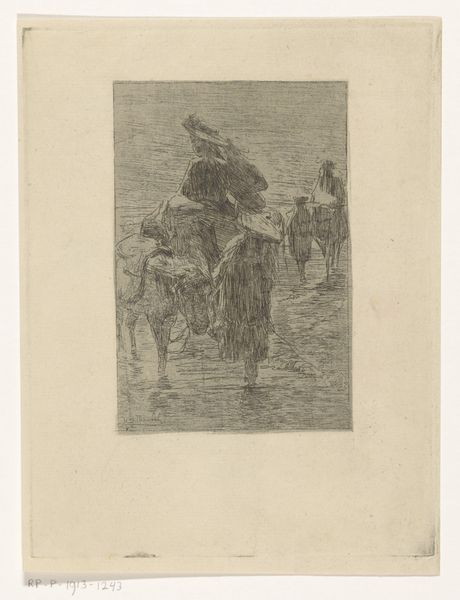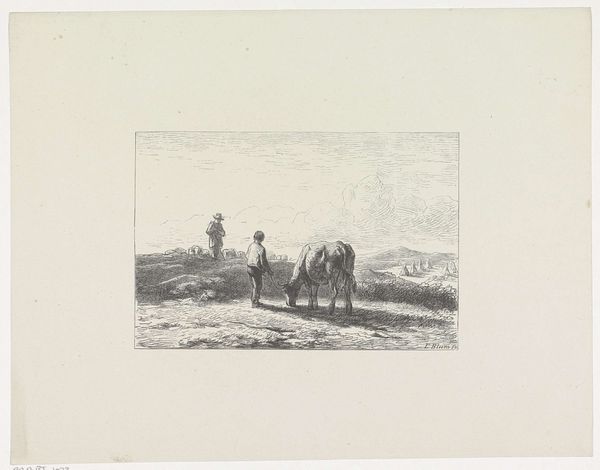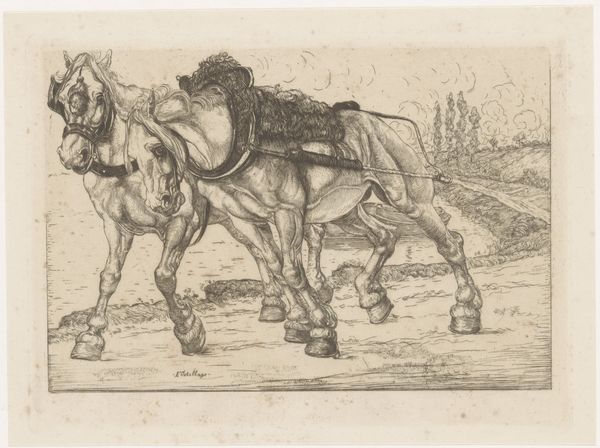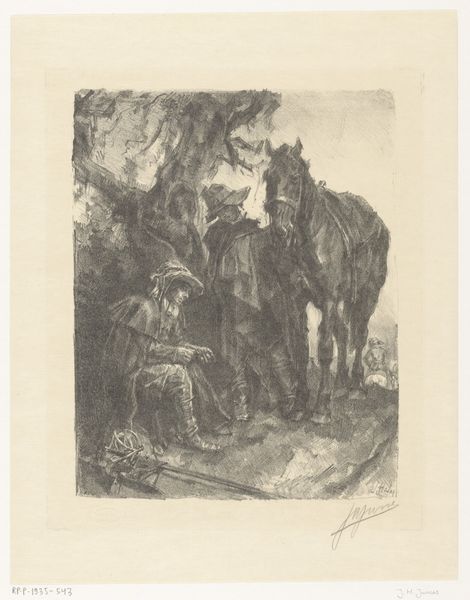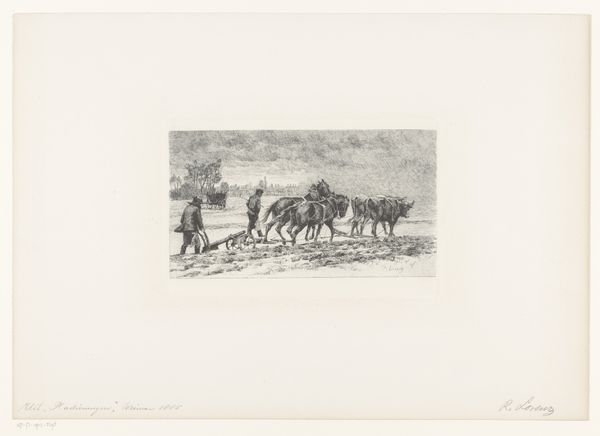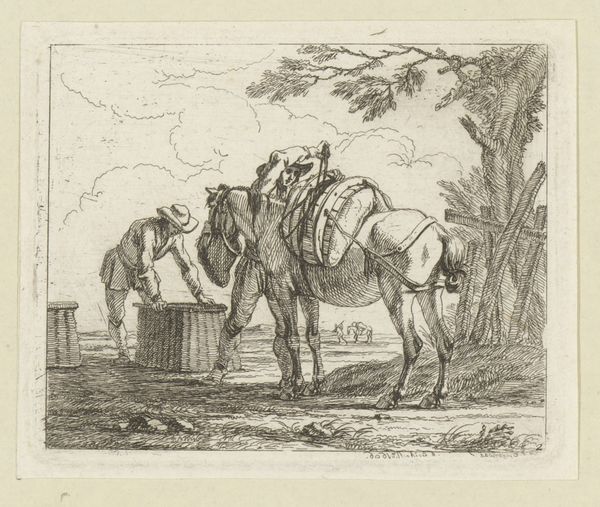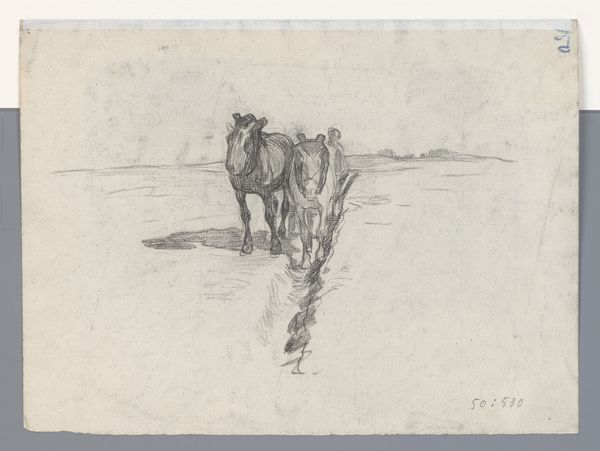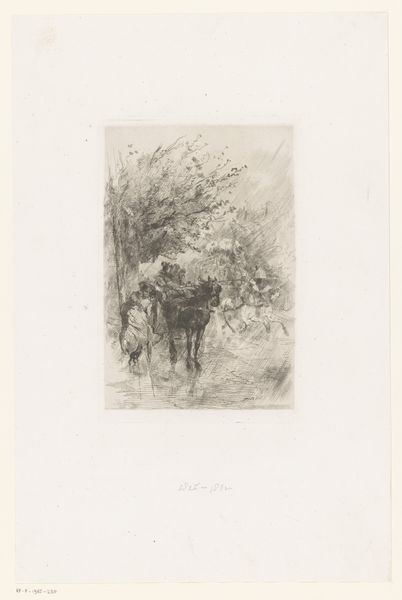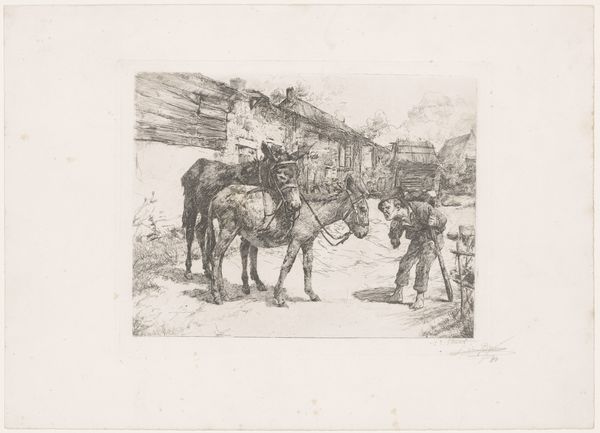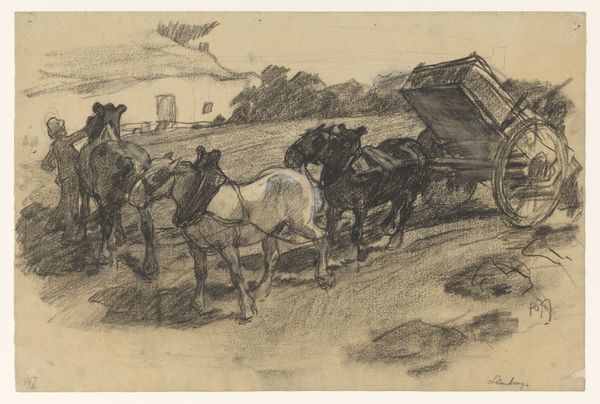
drawing, pencil
#
drawing
#
pencil sketch
#
landscape
#
pencil
#
genre-painting
#
realism
Dimensions: height 310 mm, width 243 mm
Copyright: Rijks Museum: Open Domain
Curator: This sketch, titled "Ploegen," attributed to Pieter de Josselin de Jong and dated sometime between 1871 and 1906, offers a glimpse into rural life. It’s rendered in pencil, a medium lending itself to both precision and expressiveness. Editor: The strong contrast immediately strikes me—that dark, furrowed earth against the almost ethereal sky. It’s simple but powerfully evokes a sense of laborious work. Curator: Precisely. We see here the very means of agricultural production depicted: a farmer and his horse engaged in plowing. The pencil allows for intricate detailing of the horse's musculature and the texture of the soil, emphasizing the physical labor involved. Editor: Note how the composition directs the eye, tracing the path of the plow. The strong diagonal gives it an incredible depth for such a small-scale drawing. The lines of the furrow pull your gaze into the background. Curator: The context here is important. Realism was a dominant movement during this period, focusing on portraying everyday life without idealization. This drawing presents farm labor unsentimentally, depicting it almost clinically. Editor: But even within that realist approach, look at how de Jong uses light and shadow! See how the illumination suggests the time of day and how the shadows cast by the horse give volume. I find it really enriches the overall mood, providing a visual language for this depiction of farm life. Curator: Consider too, the accessibility of pencil as a medium. It made art production more democratic, available even to artists documenting working-class life. The drawing's lack of overt stylization reinforces the notion of presenting work as is. Editor: I see your point about accessibility, yet, technically, consider the artist's mark-making. It’s controlled and suggestive rather than overtly descriptive; each pencil stroke has its own precision in creating tone and texture. The composition balances reality with subtle artistic interpretation. Curator: It ultimately reveals art as intertwined with societal dynamics. This isn’t just a pretty picture. This represents labor, class, and the depiction of ordinary life during a transformational period in Dutch history. Editor: Agreed! De Jong uses form, line and tonal gradation to create an emotive landscape and shows, within apparent simplicity, remarkable expressive force. Curator: A perfect illustration of the intersection of artistic form and social practice. Editor: An observation well met; both contribute to our comprehension of this pastoral composition.
Comments
No comments
Be the first to comment and join the conversation on the ultimate creative platform.
